“Raise Your Hand If You Have Ever Killed a Plant”
I asked this question years ago, to a room full of people as I was giving my first landscape presentation. I was quite nervous as I began my presentation, but once I asked the question, “Raise your hand if you have ever killed a plant,” almost everyone raised their hands. A few people also laughed when my hand also went up and I immediately felt a little less nervous.
I think it would be very hard to find anyone who has a garden who has never killed a plant, don’t you? Over the years, I have heard many stories, some very humorous about mishaps in the garden which ended with dead plants. I would like to share mine with you….
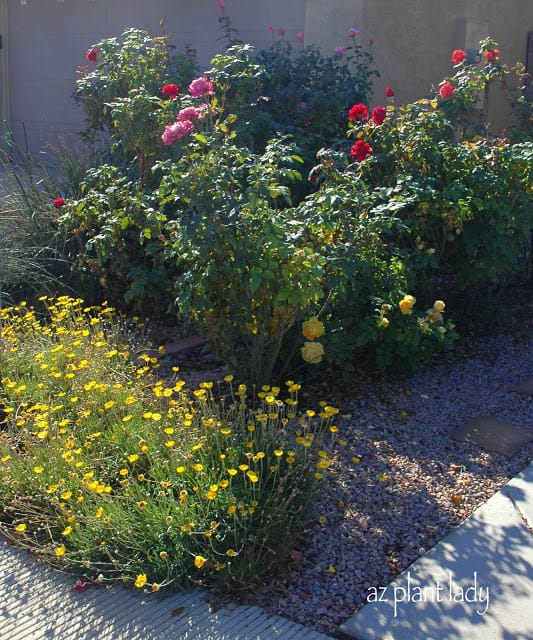
Over 18 years ago, we moved into our new home in Phoenix. It was a small, older, ranch style house that had quite a few roses and a lot of room for a garden. I was so excited to have my own piece of land to grow plants in, I could hardly wait to get started. I sent for plant catalogs and couldn’t wait to select what I would grow.
I selected a beautiful Clematis vine and some Shasta Daisies. It seemed like it took forever for them to arrive in the mail. As soon as they arrived, I opened the box and was a little disappointed at how small the plants were. But, I planted my Clematis and Daisies and had visions of how wonderful they would look once they started flowering.
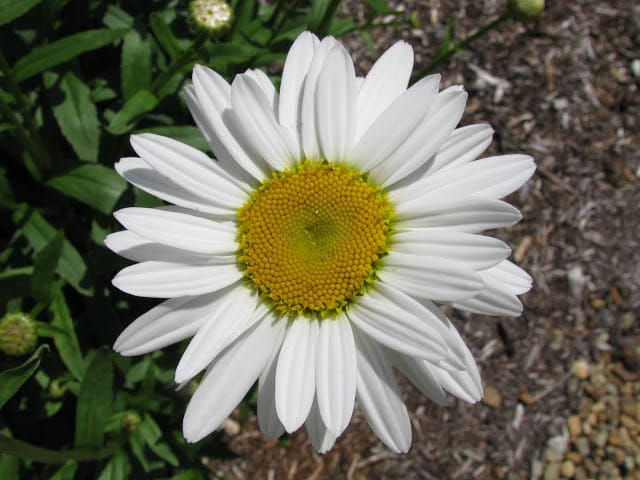
*Courtesy of Wikipedia
You may notice that the picture of the Shasta Daisy above is not mine. There is a good reason for that….I killed all of my Shasta Daisies. You see, I decided that the tiny plants that arrived in the mail needed a little help growing. So, I gave each 2″ plant a handful of lawn fertilizer.
I was sure that the added fertilizer would work miracles and I couldn’t wait to see how much faster they would grow. Well, most of you are probably already laughing at my mistake, but I was so surprised when I went out into the garden the next morning to find little brown, dried out plants. So, lesson #1 that I learned was to read the directions on the fertilizer bag and that more is definitely not better when it comes to fertilizer. I burned my little plants by adding too much fertilizer.
So, now that I learned my first lesson, I was sure to fertilize my new Clematis vine carefully.
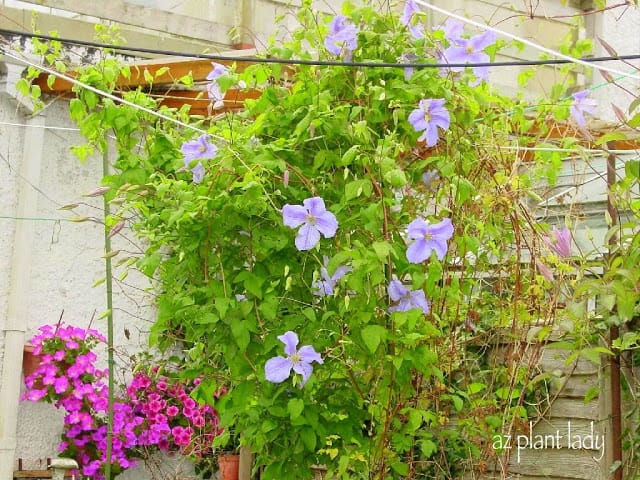
*This is my photo, buy NOT my Clematis vine. I took this photo in a garden full of flowers in Wales.
Again, I do not have a photo of my Clematis vine flowering for one very good reason….it never flowered. It did grow foliage, but after a year, it was only about 3 ft. high and kind of sad looking. Lesson #2, just because a plant says it will grow in zone 9, does not mean that it will thrive in my desert climate. The USDA Plant Hardiness zones is based on the lowest average temperature of a given region. Phoenix is in zone 9. But, the zones do not take into account the heat of a particular area. It turns out that Clematis does not like the intense heat of our summers and as a result, mine never flowered.
And so, a recap of what I learned….
First – a tiny amount of fertilizer goes very far and amending the soil with organic matter is preferable. I now only fertilize when a plant that shows a specific nutrient deficiency (I make exceptions for citrus trees and roses, which fertilize regularly).
Second, just because a plant looks pretty in a catalog and says it grows in zone 9, it doesn’t mean that it can handle the heat of our summer. Sunset magazine has created a new hardiness zone map that factors in many different variables of a given region: low and high temperatures, humidity, soil type, length of growing season and rainfall. You can access this information, which covers all regions of the United States. *Many nurseries and those in the plant industry in the western US use the Sunset zones instead of the USDA hardiness maps since they are much more accurate.
Well, for those of you who may be new to gardening, I hope my experiences will help you so that you don’t make the same mistakes I did. Many beautiful plants are very easy to grow in our desert climate….you just have to do a little research to find out which ones.
I would like to offer one last bit of advice….wherever you live, don’t rely on the plants you see offered in the big box stores – they are notorious for selling bright, flowering plants that will soon turn brown and die after you plant them. This doesn’t mean that you have a black thumb….it means that some of the plants that they sell do not necessarily thrive in your climate.
Now, I would love to hear your stories…..have you ever killed a plant?

 Noelle Johnson, aka, 'AZ Plant Lady' is a author, horticulturist, and landscape consultant who helps people learn how to create, grow, and maintain beautiful desert gardens that thrive in a hot, dry climate. She does this through her consulting services, her online class Desert Gardening 101, and her monthly membership club, Through the Garden Gate. As she likes to tell desert-dwellers, "Gardening in the desert isn't hard, but it is different."
Noelle Johnson, aka, 'AZ Plant Lady' is a author, horticulturist, and landscape consultant who helps people learn how to create, grow, and maintain beautiful desert gardens that thrive in a hot, dry climate. She does this through her consulting services, her online class Desert Gardening 101, and her monthly membership club, Through the Garden Gate. As she likes to tell desert-dwellers, "Gardening in the desert isn't hard, but it is different."

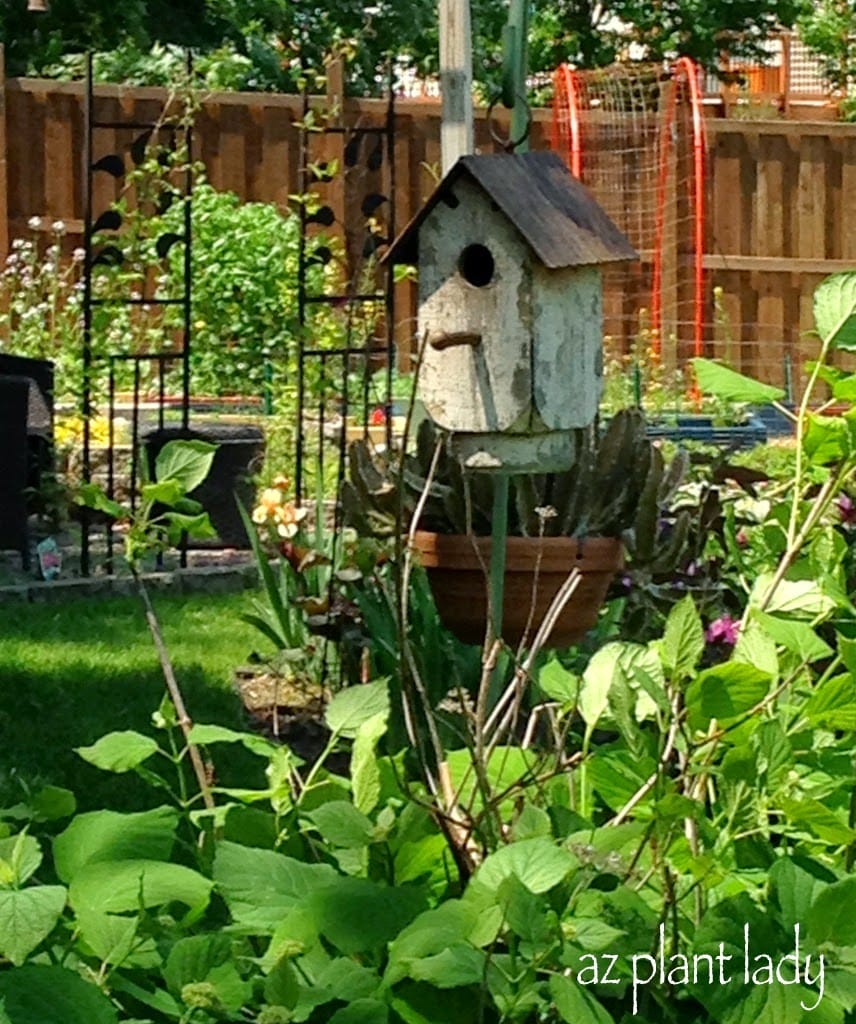
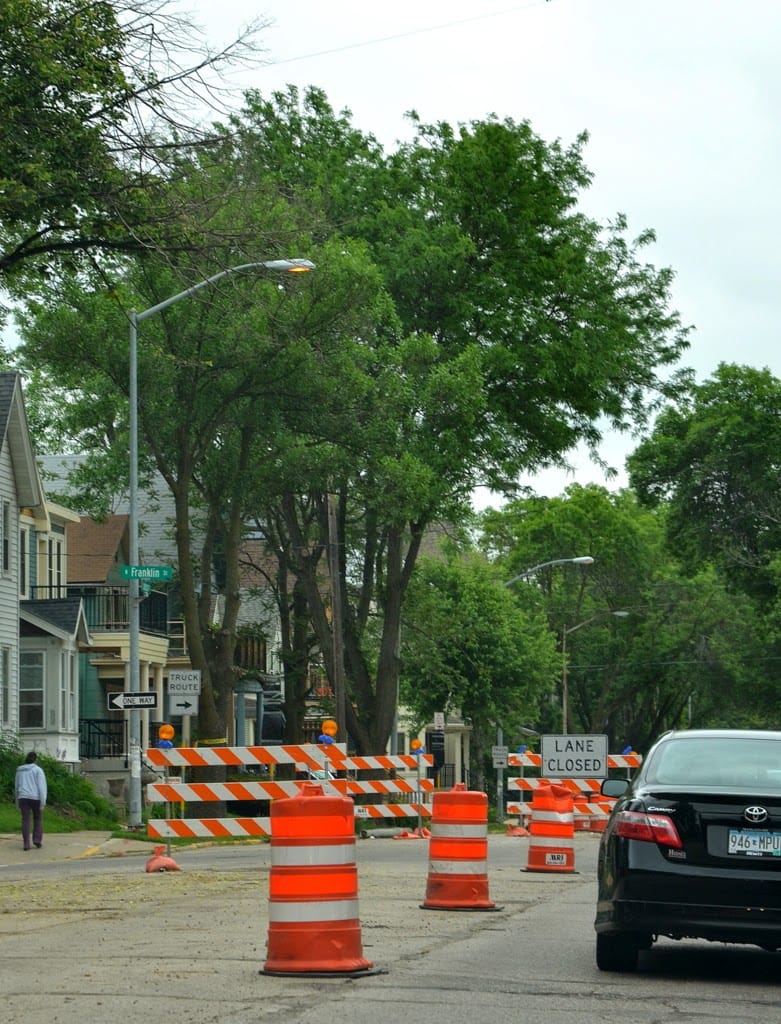
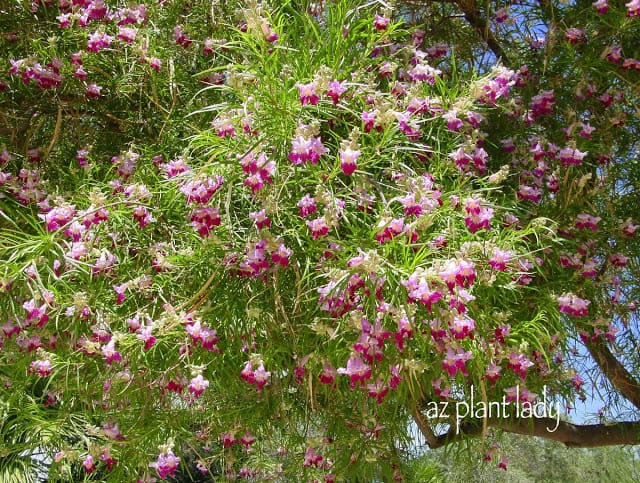
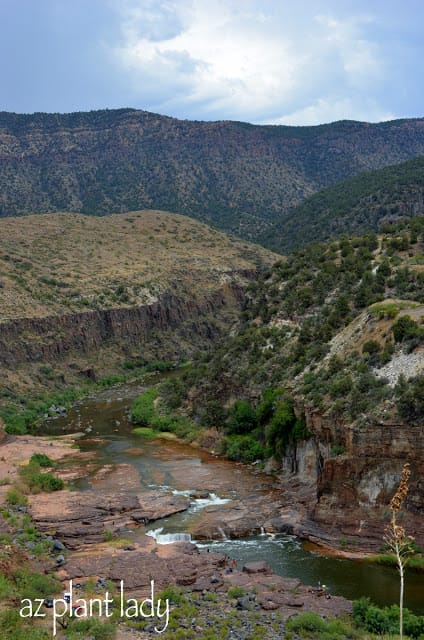










Dear Noelle, I fear that you must put me down as a mass murderer on the one hand, and guilty of multiple man slaughter on the other, where plants are concerned. And it is not simply a case of wrong plant in the wrong place, more often a change of heart, the end of the affair, and out it must go immediately to be replaced with some new favourite.
However, what you say here is so true and one must, or should, pay attention to the cultivation requirements of all the plants one seriously wishes to grow. The success of your own garden is, I am sure, in no small measure due to the fact that you do just that.
Oh yes I have starved them and left them wanting water. When I first began gardening many many years ago I figured that nature would take care of this for me. Well you know what happened. I neglected them. Years ago I'd put something in the ground and just leave it alone. Either it made it or it didn't.
I take care of them now making sure they have what they need.
I have both of my hands raised! My biggest mistake is not taking, "drought tolerant once established" seriously. My thinking, boy it's hot out here the flowers must need some water….I am learning to learn the personalities, yes I said personalities, of my plants. The majority of them will let you know by the way they look. Kind of like you know your kid is going to be sick when they have that lovely green tint to their face….
Oh, Noelle, I am afraid I am also a mass murderer. I kill nearly everything I put into a pot…eventually. They simply cannot survive on the meager water I give them in this torrid heat. In the ground is a different story entirely.
I agree with you on all of those points! I grew the lovely Shasta daisies in Atlanta for many years…had to, in honor of my daughter's name. When I moved here, I planted seeds and soon had a few pretty little daisies. However, before long, they were dead. Not sure why, though I suspect it is that "heat zone" thing you mentioned. Here in the valley, in inland Florida, we have more prolonged heat days than most of Florida. I've learned this lesson over and over in my garden. Longing for the day when all plant tags will include heat zone info. Of course, by then, I'll probably have it all figured out on my own. I love the Sunset Zone guides. They are so much better for my locale, because they take all of those things into consideration.
I also made the fertilizer mistake, the very first time I ever bought plants to put in my very first garden. None of the plants died, as they were larger plants like crotons and tis and a sago. However, a lot of the leaves were burnt and everything looked bad for a while. Now I don't even buy fertilizer. Nature's compost is much gentler, plus it conditions our sandy soil.
Noelle,
I am glad I am not the only one that kills plants. Some of the plants my husband gives me are so high maintenance and they usually die after a few months. I feel so bad but he always picks out those bromeliads…I kill them every time.
I am a sucker for those deals on plants. I killed some Rudbeckia that looked simply stunning last Fall. Once in my garden they just withered. Probably I did lots wrong, as well.
*Raising hand, raising hand again, again…" I've killed so many plants over the years I don't know where to begin. The poor things have been starved, left with their feet standing in water, allowed to go without water, mutilated with hoes, shovels, and hands, tortured until they could take no more and went to the big compost pile. The saddest thing I killed was a dogwood tree that I'd longed for. I have no idea what I did, but that poor little tree never made it through the first summer.
Fun tales with lessons, Noelle. Thank you for sharing.
This is wise advise that you share here re fertilizer and zones.
Oh yeah, I've killed a plant or two in my time, sad to say. Twice I bought small gardenia plants to keep in containers on my patio. I put them in sun, shade and part sun trying to find their perfect spot and they died. Insert a few tears here please.
Quick answer, of course, and how!!!
A very funny post.
Jen
Very sage advice Noelle. Our last house was in the same zone as this one, but the microclimates are so different, and I know that my zone 9 is not the same as yours. If it wasn't for the Sunset zone map system, I'm sure I would have killed a lot of plants with heat stress at our last house. I'm working more with natives now, but still, before I buy any plant, I make sure it's suited to my microclimate, and I never trust that just because a local retailer is selling a plant, that it's meant to grow here.
What, do you mean today? Nothing dead yet for today but then I haven't yet been outside (it's a downpour at the moment) so I can't say for sure. However, I am in the process of slowly killing off by inches several expensive perennials and one rare tree. How's that for full disclosure?
Christine in Alaska
I have killed many plants by over fertilising, over-watering, under-watering and neglect.
But over the years, I got the hang of it to know what plants to keep and what plants to avoid and also based on my commitment in maintaining my garden. The easiest to deal with are the hardy ones. They can take and tolerate all kinds of abuse.
BTW – love those roses. Wonder how is the rose doing – the one that you had totally pruned. Could you update us the progress – like how does it look now?
aloha noelle,
i don't know how many mediterranean type plants i've killed here when its rainy season even with well drained soil-the lavendars just wilted and slowly rotted away and the same with the dahlias….waaaaaah
With my short gardening experience, I already killed quite a few plants, and shamelessly blogged about those "accidents" 🙂 Now, I am going to check out that sunset hardiness zone map.
My hands are raised. jim
Oh, Noelle, I have both hands up! When I first began to get the garden bug, I bought things from catalogs without having a clue what my USDA Zone was, or indeed what any of that meant. I just wanted, basically, an English cottage garden. In the burning hot, humid, and slightly drought-ridden (at the time) subtropical South. It was a steep learning curve.
The old-fashioned delphiniums that fried in the sun still haunt me… 😉
In school studying horticulture, some of us students would say that we didn't magically keep all our plants alive–we just knew when they were gone and would throw them out or get rid of them.
Count me in ~ I've certainly killed my share. I remember planting my tender seedlings out during the hot midday sun the first year I started gardening ~ I fried them all! I have a long way to go but I feel I've come a long way since that day too.
I really enjoyed the photos from your daughters trip to Germany too. I love the window boxes and stone planter. It looks like a beautiful country.
btw, thanks for the answer to the school year question. Interesting. I think eight weeks is a good amount of time to have off. Not long enough to get totally bored but a good break.
LOL one time we lived in a condo that had a small front yard of grass. We were responsible for caring for it. How hard can that be. I decided that it needed fertilizer. I bought dicondra lawn fertilizer and weed killer. I was so proud of myself. Within 2 days the yard was dead. Oops, in a dicondra lawn grass is a weed. Silly me!
I could go on but it's depressing how the mass destruction can be!!!
LOL, I have killed a number… 🙁
My hands are up! I've tried shasta daisies twice and they died both times. I'm still not sure why, but I learned not to plant them again! In the beginning I was more likely to overwater than to underwater and I know I lost a few to that.
My hand is definitely up. I've killed more than I'd like to remember.
You're so right about the 'zones'. They're not created equal. Our zone 8, here in Texas, is not the same zone 8 they have in Washington state.
It's good to do some homework.
Uh oh, will I incriminate myself if I say yes??
Haven't we ALL committed a crime against plants just by putting them in the wrong place? I sure did when I was a beginning gardener.
I got some good laughs from this! but I also think that people will learn from your words.
Garden joys,
Sharon Lovejoy Writes from Sunflower House and a Little Green Island
I once killed a Bella Palm in my living room. Too much fertilizer.
Suzanne
Hello Noelle, As teachers this comes under the "Do as I say, not as I do" category. I recently killed a butterfly bush. I temporarily "planted" it in a container until I decide its permanent home. Well, the container didn't have adequate drainage and the poor thing drowned in a rainstorm. You would think I'd know by now. Pam x
I've been pampering a pot of mint for two years and I think it's finally died. I feel like such a failed gardener! Forgetting to water more than once I'm sure had something to do with it. But after hearing all the stories of mint gone bad in people's gardens (including the neighbor next door) I didn't want to let it loose in the ground…
Ah i am a constant killer as well. And over watering is the reason most of the times.
My worst was a poor butterfly bush I planted in the middle of my yard in Maine. It froze to death. I should have planted it against the house out of the prevailing wind in better draining soil. I planted one here with that in mind and it's survived two winters now. I feel better confessing. Thank you.
I didn't read through all the comments, Noelle, but I doubt you have one person who answered no:) I'm with Edith–I've been guilty of mass murder. I've gotten better over the years as I've become more experienced, but right now I am sick about the latest likely casualty in my garden. I bought a new 'Pink Diamond' hydrangea a week ago, which now looks like it died a quick death. I'm not sure what happened–perhaps the spruce tree roots next to it sucked up all the water during this heat, but I'm so sad about it. I'm still watering it each day in hopes it will recover.
And yes, I've burned quite a few plants with fertilizer in my time:)
I've killed many plants. Probably the top way I've done that is by moving them to death or deciding to move a well established plant on a 90 degree day and then getting lazy about watering it. I don't even buy houseplants anymore I've killed so many.
Great post. We've all had those experiences.
My standard advice to new residents here in the Hill Country is: Plant it where it wants to grow.
And nearly 100% of the plants will thrive.
I've killed plenty – I suppose the toughest one so far that I've done away with is an ivy in the house, plus planting a plant where I wanted it to grow and not taking into consideration that it doesn't like wet feet! – in that part of the garden I've killed daphne, cotinus , monarda,and ribes.
I'm raising both hands. In my younger years I would kill a plant just because I got bored or tired taking care of it.
Oh, thank you all for being brave enough to confess 😉
Thankfully, many plants seem to thrive no matter what we do to them 🙂
James, the rose I pruned has grown back beautifully and I plan to feature it in a post in September.
Hello Noelle,
I've killed plenty too, but it is the 'almost dead' ones that upset me the most! I live in constant denial of the fact that we get occasional hard frosts here and end up with quite a few 'not quite dead' plants in the garden. I nurse them back to health over the summer only to have the same thing happen again the next winter!